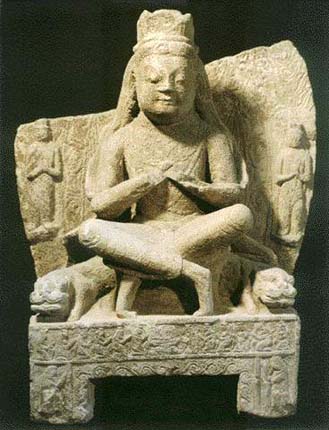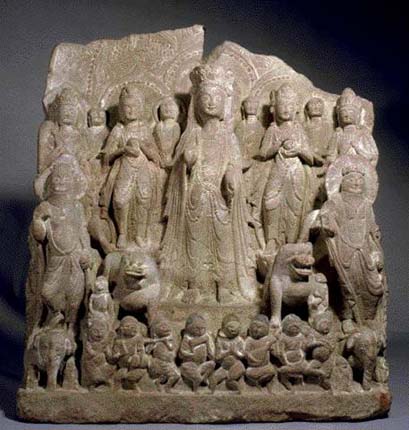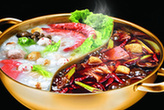 |
|
|
The art of Buddhist figures in China took shape with the introduction of Indian Buddhism. The legend had it that on a certain night of the year 60, Ming Emperor Liu Zhuang in Eastern Han dreamed a golden man without knowing where he came from. The next day, the emperor called his subjects together to explain the dream. A minister named Fu Yi said Xitianzhu (in ancient India) had such a sage called Buddha dressed in gold. What the emperor had dreamed must be the Buddha. Then the emperor sent one of his attendants, Cai Yin, with thousands of soldiers, to Tianzhu on a diplomatic mission to seek Buddhist doctrine. In 67, they returned to China with Buddhist scripture and figures. This was the first record on China's Buddhist figures in ancient books, but it didn't tell what kind of figures they were. From the existing stone sculptures and pottery Buddhist figures, we will find that the Han people carved them according to the images of celestial beings in vogue at that time.
In the Five Dynasties and 16 States, Buddhist figures in Chinese style began to show up. They were not reliefs or shallow-carved images attached to other objects, but whole Buddhist figures with complete body structure. The statues, however, still followed the suit of Indian models.
 |
|
|
In the Northern Wei period, the art of Buddhist figures flourished and began to shake off trace from ancient India. At that time, emperors believed in Buddhism which resulted in a nationwide practice to cast figures. The early works were greatly influenced by the Indian arts. The most attractive was two gold-plated copper buddhas sitting abreast. Hebei region was then the figure-carving centre and had gathered many skillful craftsmen from the country. Among the Yungang Grottoes we found many ancient outstanding works.





Why not rent a boyfriend, or girlfriend to please parents during the Spring Festival?